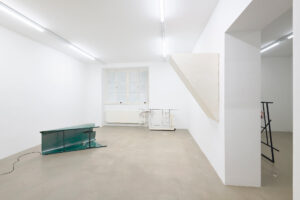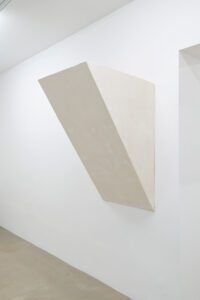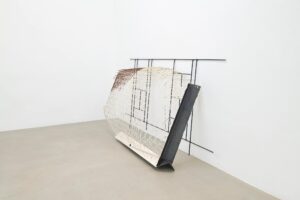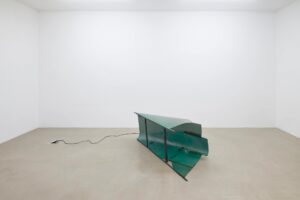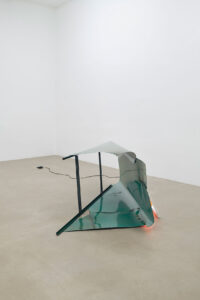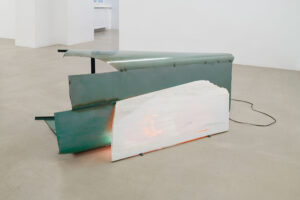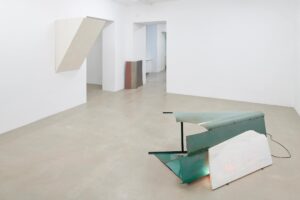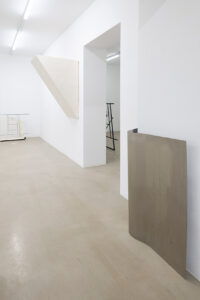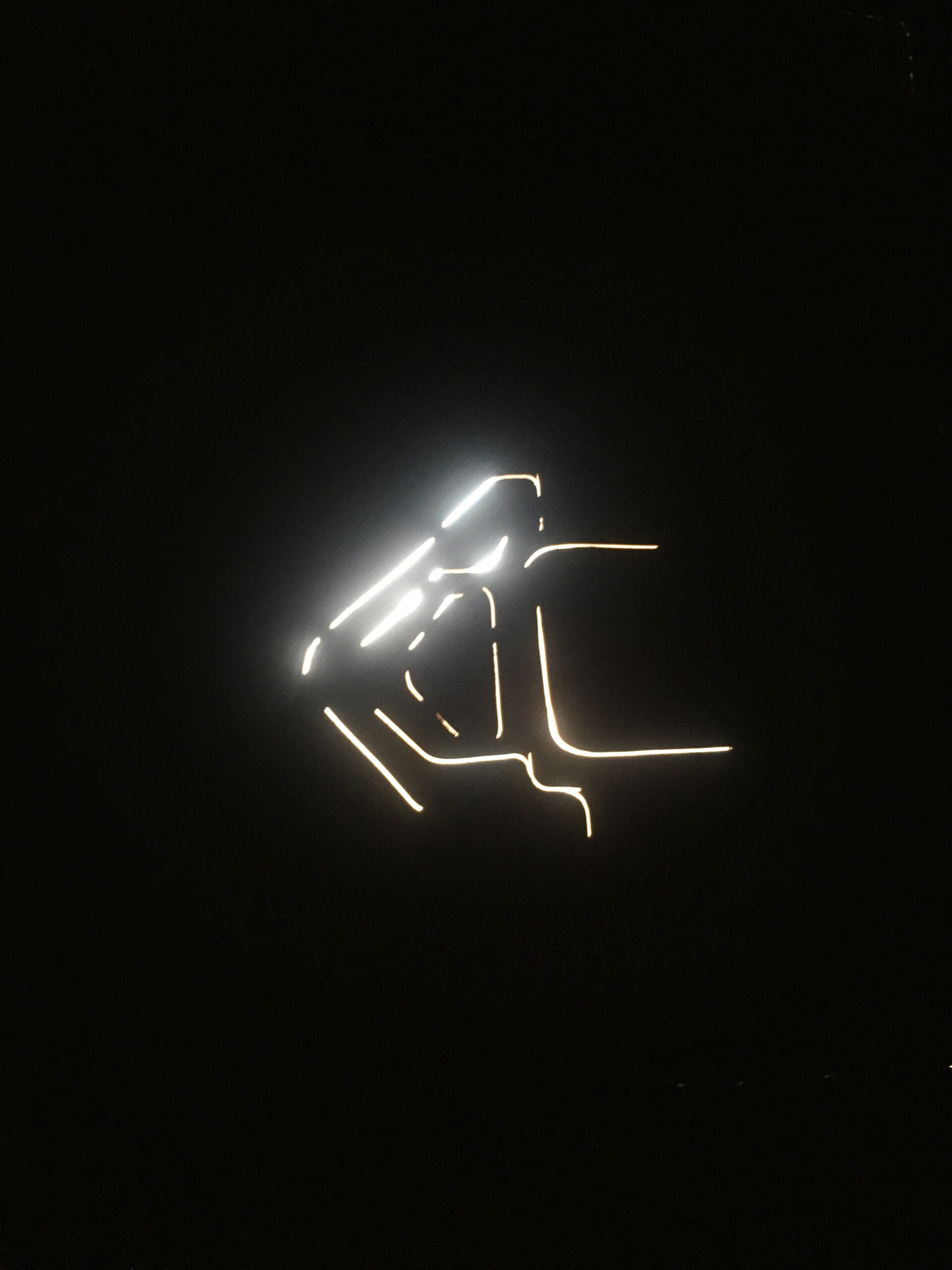
Immediately adjacent to the Monterey Street on-ramp to U.S. Route 101 in the city of San Luis Obispo, California, sits the remains of the Milestone Mo-Tel (or Motel Inn), the world’s first “motor hotel.” The Mission Revival complex provided lodging to drivers on the journey between Los Angeles and San Francisco from 1925 to 1991. After years of disuse, most of the motel was demolished in 2006. Today, one finds an extant three-tier belltower and the typical stucco archways wrapping the refurbished but unused former office space. A few steps away, along the perimeter of the original footprint, also stands a section of wall, the aged façade of what once was the motel’s restaurant. Cream-colored and measuring roughly five meters wide by one-story tall, it is disconnected from any other part of the structure and supported instead by five metal poles attached to wood braces. As one merges onto the highway, they pass this curious fragment of early twentieth-century Southern California vernacular—with its arch, a few terracotta roof tiles, a large window, and a stylized belfry—just floating in an abandoned lot like the one column left standing on the site of an ancient Greek temple.
Rather than being part of an official historic location, the wall has spent over a decade in its liminal state as an isolated architectural snippet manipulated to stay on display as a kind of structural excerpt. Most preservation projects in the United States invite close consideration in some form—this property is fenced off and usually glimpsed at 90 kilometers per hour. The wall does not preserve so much as imply, and this prompts a different kind of viewing.
When I think of the work of artist Thea Moeller (since initially becoming familiar in 2015), this edificial remnant is the first thing that comes to mind. Moeller’s sculpture practice involves objects put into various forms of tension or equilibrium, objects re-presented, objects only slightly altered, and objects examined under changed circumstances from which they originated, often in the space of a white-wall gallery. Seeing her art inevitably involves asking how physical extracts are interacting with and within a new context.
From the perspective of someone who teaches art history through the lens of Los Angeles, there has been a tendency on my part to reach to assemblage of the 1950s and 1960s for comparisons to Moeller’s process. The gathering and repurposing inherent to her sculptural practice—sometimes for immediate usage and other times saving for the right occasion—recalls for me the stories of Betye Saar combing flea markets or Ed Kienholz visiting junk yards, finding the items that would morph into the features of art to come. And there were Angeleno artists at that time who also modified industrial materials (akin to Moeller’s use of rubber, sheet metal, and steel) or made similar moves as her between the scale of the gallery and that of other architectures, such as Noah Purifoy. But assemblage work of that era was much further assembled into configurations that transformed the elements. Moeller places components—leaning them, pulling them, balancing them, reinstalling them, or, at the most heavy-handed, fusing a limited number of connections between them or applying lacquer—more so than constructing something. Hers is a lighter-touch approach that suggests the possibility of some next step that gallery goers are not yet privy to. That is not a suggestion that one day all of her sculptures will amass into some mega piece, but rather that viewing Moeller’s exhibitions involves absorbing the current situation and wondering if this is the final state of these artworks. Analogous to the motel wall, one imagines something to come as much as what is presented.
Back along the highway, there are other such instances when approaching and passing roadside attractions. “World’s largest” whatevers dot desert landscapes, drawing attention for their respective novelties but without any particular relation to the next one after. Since the road is then an unedited collection of short stories rather than a novel, one views each “must see” on its own terms, especially over time. Multiple drives across Kansas or equally flat expanses provoke pondering of “what ifs”. Could that huge ball of twine finally roll away? What happens here if someone makes a more gigantic pistachio elsewhere? But the attractions with simplicity in their gestures similar to Moeller’s sculpture—positioning, suspension—raise the most questions. Ever since the group Ant Farm took ten old Cadillacs and stuck them at an angle nose-first in a field in Amarillo, Texas, the cars have acquired new paint jobs and graffiti regularly, appearing changed with each new trip. When will one of them finally tip over, or be washed away by flash flooding, or be stolen? While Twin Arrows, Arizona, became abandoned, its two monumental, red-and-yellow wooden arrows (each seven-and-a-half meters tall) stood perched as a landmark the same as they had for decades. Then one of them finally fell over, as many probably thought might happen eventually. Even still, looking today at the widowed arrow hanging on with the other lying flat beside it, one wants to speculate: Will someone put it back up? Will it sit there and just erode?
Anthony Carfello
